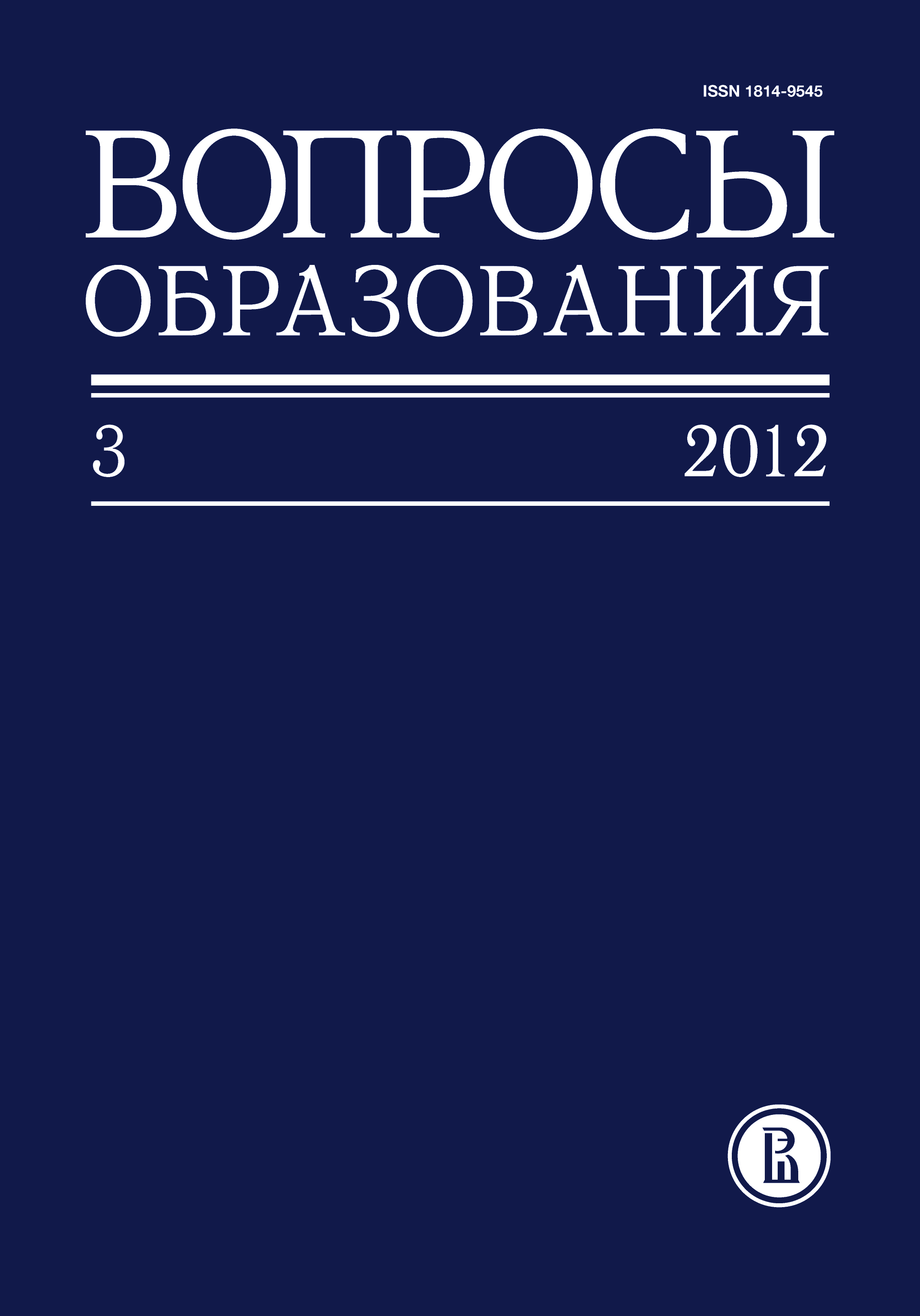Changing Trends in Public Demand for Higher Education in Today’s Russia
Abstract
Irina Abankina, Ph.D. in Economics, Professor, Director of the Institute for Educational Studies, National Research University — Higher School of Economics, Moscow, Russian Federation. Email: abankinaI@hse.ru
Tatyana Abankina, Ph.D. in Economics, Director of the Center for Applied Economic Research, National Research University —Higher School of Economics, Moscow, Russian Federation. Email: abankinaT@hse.ru
Lyudmila Filatova, Ph.D. in Economics, leading researcher at the Center for Applied Economic Research, National Research University —Higher School of Economics, Moscow, Russian Federation. Email: lmfilatova@hse.ru
Elena Nikolayenko, research fellowat the Center for Applied Economic Research, National Research University —Higher School of Economics, Moscow, Russian Federation. Email: enikolayenko@hse.ru
As the higher education public funding principles have changed and differentiation among higher education institutions has grown, dynamics of public demand for higher education affected by population decline and decrease in families’ ability to pay should be researched as much as never before. The paper investigates the existing trends in public demand and how they influence financial security and restructuring processes in the Russian higher education system. The study enabled to reveal transformation of the professional education market, its transition from expansion to contraction. Nowadays, the professional education market is changing under the influence of multidirectional trends determined by factors external to education, such as population decline, decrease in effective demand, employer dissatisfaction with education quality, and lower student motivation to continue education.
In this context, the basic vector for development quite naturally involves structural optimization, merging educational institutions of different levels, diversification of funding sources, and change in higher education management system.
In the contraction phase of the market, an adequate restructuring policy can result in consistent structural transformation. However, neither experts nor the society have yet reached a compromise on these issues, which dooms the optimization course to protests and opposition from the professional community, parents and employers.









